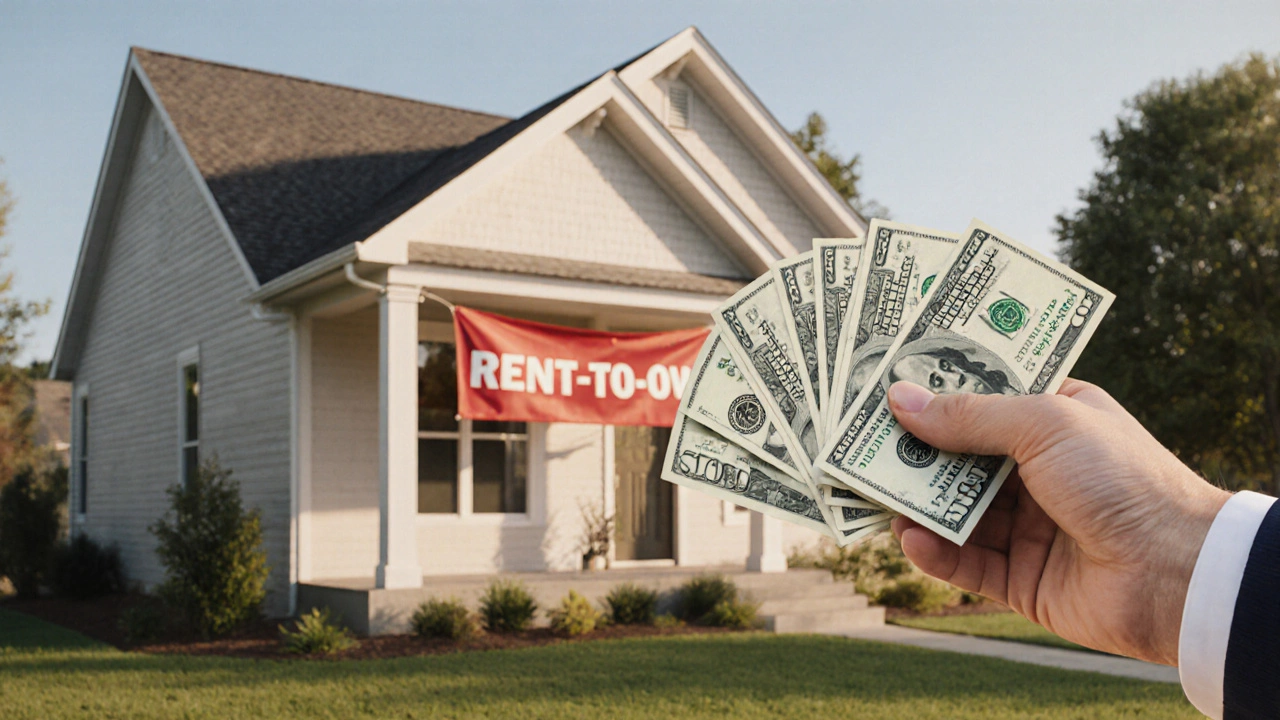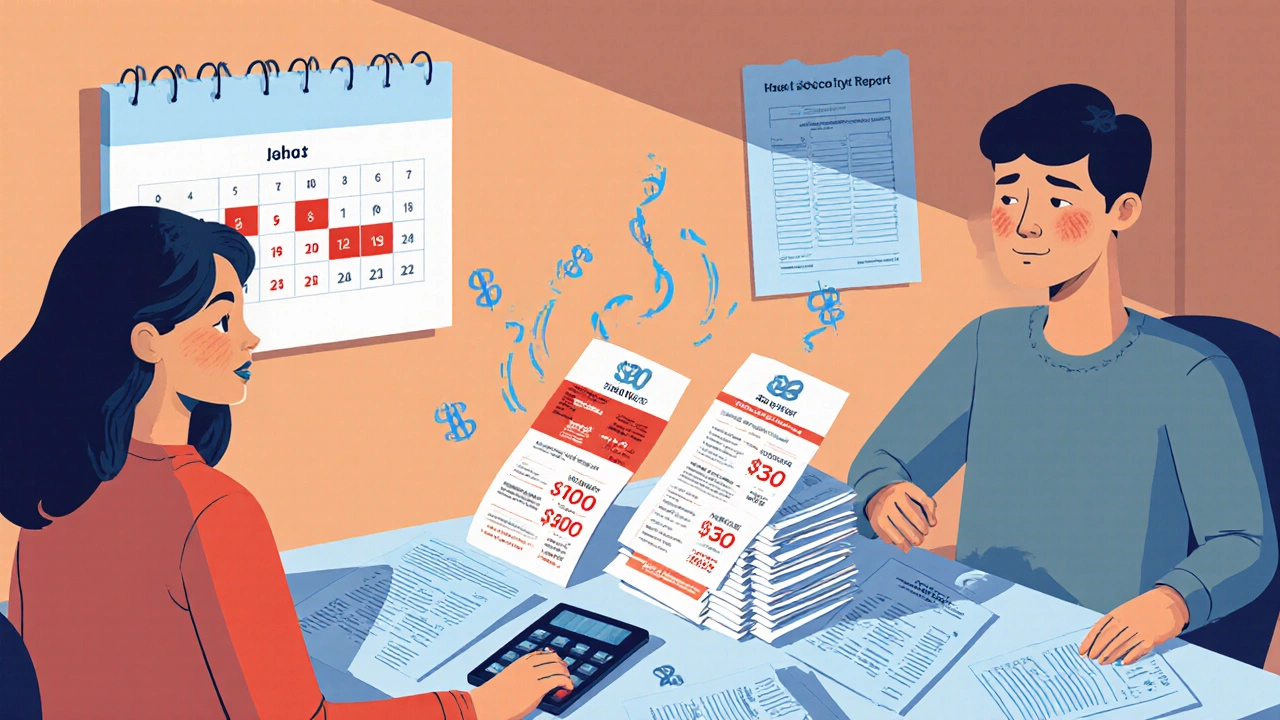Rent-to-Own Home Deals: 7 Reasons They're a Bad Idea

Oct, 25 2025
Rent-to-Own vs. Traditional Mortgage Calculator
Compare Your Options
See exactly how much more expensive rent-to-own arrangements can be compared to traditional mortgages.
When you hear about rent-to-own a housing arrangement where you rent a property with an option to purchase it later, you might think it’s a shortcut to homeownership. In reality, the model packs hidden fees, legal traps, and financial surprises that can derail your plans. Below we break down the biggest reasons why rent‑to‑own often backfires, what the numbers really look like, and which alternatives give you a safer path to a house of your own.
What Exactly Is a Rent‑to‑Own Agreement?
A rent‑to‑own (also called lease‑to‑own) contract combines a standard lease with a purchase option. Typically you pay an upfront option fee-often 2‑5% of the projected sale price-plus a slightly higher monthly rent. A portion of each rent payment is earmarked as “credit” toward the eventual down payment.
Key parts of the deal include:
- Lease agreement the legal document that outlines rent amount, term, and maintenance duties
- Option fee a non‑refundable payment that secures the right to buy later
- Rent credit rate (usually 20‑30% of monthly rent)
- Purchase price (fixed at signing or based on market appraisal at the end)
Sounds simple, but each component can hide costs that compound over time.
1. You Pay for an Option You May Never Use
The upfront fee is non‑refundable. If you decide not to buy-because you can’t qualify for a loan, your job changes, or the market drops-you lose that money. In Los Angeles, a typical option fee for a $600,000 home runs between $12,000 and $30,000. That’s a hefty sum to walk away with.
Even if you do purchase, the fee is usually applied as a credit toward the down payment, not toward the principal balance. The net effect is you’ve paid extra to secure a purchase that could have been financed at a lower cost.
2. Higher Monthly Payments Drain Your Budget
Rent‑to‑own rents are usually 5‑15% above market rates because the landlord expects to recoup the option fee and risk premium. For a $2,200 market rent, you might be paying $2,500. Over a five‑year term, that extra $300 a month adds up to $18,000-money that could have gone straight to savings or a traditional mortgage down payment.
Moreover, the “rent credit” portion is often a small slice of the extra rent, leaving you with a net loss if you never buy.
3. Credit Building Is Not Guaranteed
Many buyers assume the rent‑to‑own period will improve their credit score so they qualify for a mortgage later. In practice, most landlords do not report rent payments to credit bureaus. Even when they do, the reported amounts are usually classified as “installment” rather than “mortgage” payments, which lenders weigh less heavily.
Without an official credit boost, you may still face the same loan‑approval hurdles you had before-particularly if you rely on the rent‑to‑own period to repair credit.

4. The Purchase Price Can Be Unfairly Set
Some contracts lock in a purchase price at signing. If home values skyrocket, you win. If they stagnate or fall, you overpay. A 2023 study of 312 rent‑to‑own deals in California showed that 42% of buyers ended up paying more than the market price at the end of the term.
When the price is set by appraisal at the end of the term, the landlord may influence the appraisal or include clauses that let them adjust the figure up to a certain cap, further skewing the bargain.
5. You’re Still Subject to Standard Mortgage Qualifying Rules
When the option period ends, you must secure a mortgage to complete the purchase. That means you’ll need a qualifying credit score a numeric representation of your creditworthiness used by lenders, sufficient income, and a down payment (often lowered by the option fee and rent credits).
If your financial situation changes-job loss, rising debt, or a dip in credit score-you could lose the home and the money already invested.
6. Legal and Maintenance Risks
In a rent‑to‑own deal, the landlord usually retains ownership until you exercise the purchase option. This means they control major repairs and property taxes. If they neglect maintenance, you could be living in a deteriorating home while still paying premium rent.
Additionally, the lease agreement may contain clauses that allow the landlord to terminate the contract for minor breaches-like a late rent payment-causing you to lose all accrued credits.

7. Better Alternatives Exist
Instead of a rent‑to‑own contract, consider these proven paths:
- Mortgage a loan specifically designed for purchasing real estate with a low down payment (as little as 3% for qualified buyers)
- Saving for a larger down payment while renting a standard lease
- Participating in first‑time‑buyer assistance programs that offer grants or low‑interest loans
- Exploring shared‑ownership models where you co‑own with an investor and buy out later
These options usually avoid the hidden fees and risky termination clauses inherent in rent‑to‑own agreements.
Financial Snapshot: Rent‑to‑Own vs Traditional Mortgage
| Metric | Rent‑to‑Own | Traditional Mortgage |
|---|---|---|
| Upfront Cash Requirement | $12,000‑$30,000 (option fee) + first month’s rent | 3%‑20% down payment (e.g., $18,000‑$120,000 on $600k home) |
| Monthly Housing Cost | $2,500 (≈15% above market) | $2,200 (market rent) + mortgage $2,300‑$2,600 |
| Total Cash Outlay Over 5 Years | ≈ $150,000 (including lost option fee) | ≈ $138,000 (down payment + mortgage payments) |
| Equity Built | Typically $0‑$5,000 (depends on rent credit) | ≈ $30,000‑$50,000 (principal reduction) |
| Risk of Losing Investment | High - option fee non‑refundable, rent credits may vanish | Low - equity remains even if you sell |
The numbers make it clear: rent‑to‑own usually costs more and builds far less equity.
Checklist Before Signing a Rent‑to‑Own Contract
- Read the lease agreement the document detailing rent, term, and responsibilities line‑by‑line. Watch for early‑termination clauses.
- Confirm the exact amount of the option fee and how (or if) it will be credited toward the purchase price.
- Get a professional home appraisal an assessment of the property's market value at the start and understand the method for future valuation.
- Calculate the total cost over the intended term, including extra rent, option fee, and any maintenance responsibilities.
- Check your current credit score the numerical representation lenders use to assess loan risk. If it’s below 620, you may not qualify for a mortgage later.
- Ask the landlord about any closing costs fees paid at the final purchase, such as title insurance and escrow you’ll still owe.
- Seek independent legal advice. A real‑estate attorney can flag hidden traps and suggest amendments.
Skipping any of these steps often leads to regret down the road.
Frequently Asked Questions
Is the option fee refundable if I decide not to buy?
No. The option fee is designed to compensate the seller for taking the property off the market. It’s typically non‑refundable, even if you walk away.
Can rent payments be counted toward my mortgage down payment?
Only a small portion-usually 20‑30% of each rent payment-is credited. The rest is pure rent. Lenders also require proof that the credited amount is documented.
What happens if my credit score drops before the purchase date?
You’ll likely lose the chance to finance the home, and you’ll forfeit the option fee and any rent credits. Some contracts allow a grace period, but most force you out.
Are there tax benefits to a rent‑to‑own arrangement?
Generally no. Because you’re still a tenant, you can’t deduct mortgage interest or property taxes. Once you become the owner, you can claim those benefits, but only after the purchase.
How does a rent‑to‑own contract end if I decide not to buy?
The lease terminates, you move out, and you lose the option fee and any accumulated rent credits. Some contracts give you a short notice period, but the financial loss is still there.
Understanding these pitfalls before you sign can save you thousands-and a lot of stress. If you’re serious about owning a home, weigh the hidden costs against the clear advantages of a conventional mortgage or a first‑time‑buyer program. The shortest route to equity is usually the most straightforward one.